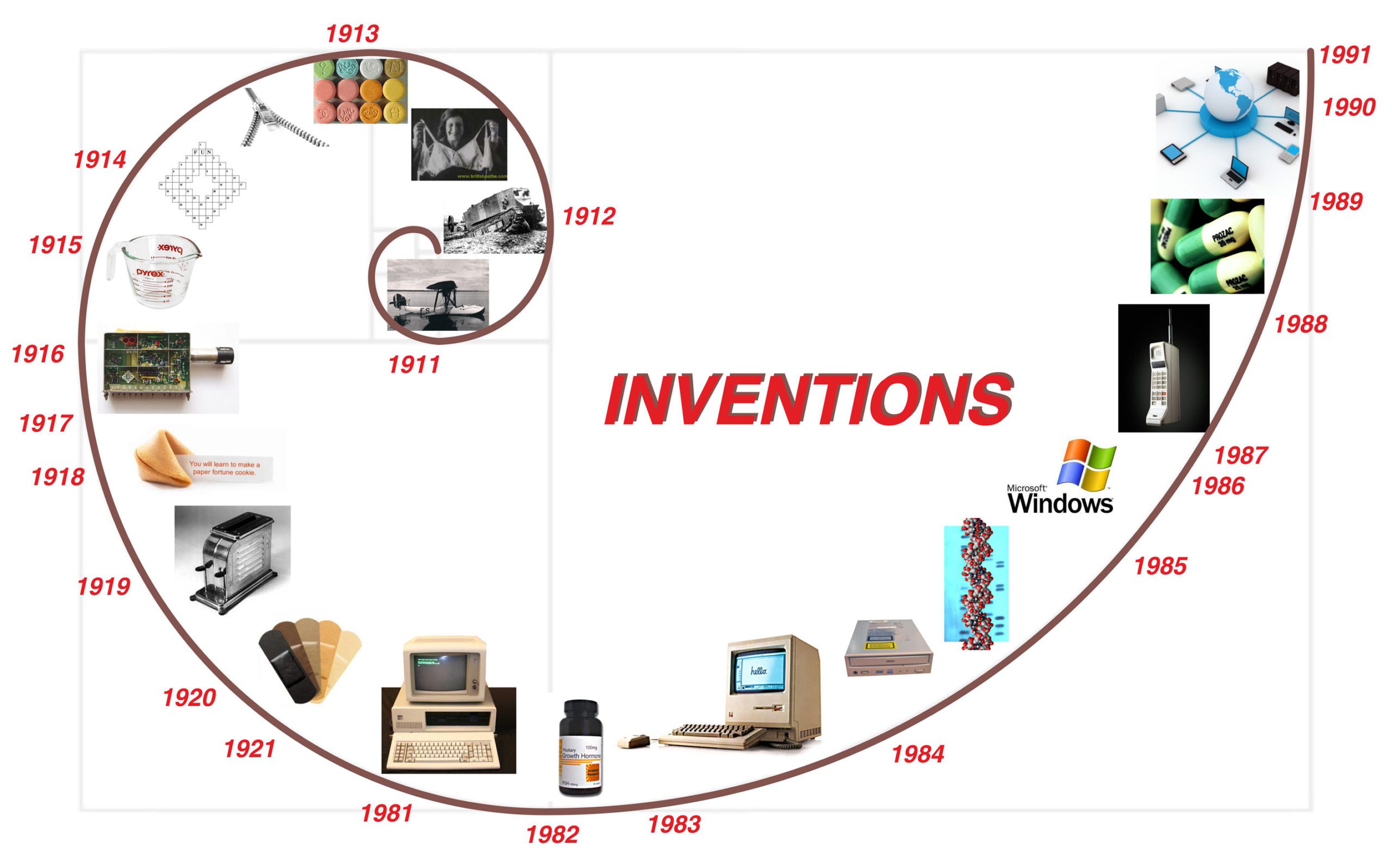1955—MICROWAVE OVEN
In 1945 Raytheon’s Percy Spencer remains before a magnetron (the force container of radar) and feels a sweet treat begin to liquefy in his pocket: He is interested. When he puts popcorn portions before the magnetron, the pieces blast everywhere throughout the lab. After ten years Spencer licenses a “radar range” that cooks with high-recurrence radio waves; that same year, the Tappan Stove Co. presents the principal home microwave model.
1957—BIRTH-CONTROL PILL
Enovid, a medication the FDA favors for menstrual issue, accompanies a notice: The blend of engineered progesterone and estrogen additionally avoids ovulation. After two years, more than a large portion of a million American ladies are taking Enovid—and not every one of them have spasms. In 1960 the FDA affirms Enovid for use as the main oral preventative.
1958—JET AIRLINER
The Boeing 707-120 introductions as the world’s first effective plug plane aircraft, introducing the period of open mass air travel. The four-motor plane conveys 181 travelers and travels at 600 mph for up to 5280 miles on a full tank. The main business plane flight takes off from New York and grounds in Paris; local administration soon associates New York and Los Angeles.
1959—FLOAT GLASS
There’s a reason old windowpanes twist everything: They were made by quickly pressing a sheet of scorching glass between two hot rollers, which created a modest however uneven sheet. English engineer Alastair Pilkington alters the procedure by skimming liquid glass on a shower of liquid tin—by nature, totally level. The principal manufacturing plant to create usable buoy glass opens in 1959; an expected 90 percent of fortified glass is still delivered along these lines.
1961—INDUSTRIAL ROBOT
The Unimate, the main programmable mechanical robot, is introduced on a General Motors sequential construction system in New Jersey. Brought about by George C. Devol Jr. to move and get things, the innovation gets a tepid gathering in the United States. Japanese makers adore it and, subsequent to permitting the outline in 1968, go ahead to command the worldwide business sector for mechanical robots.
1962—COMMUNICATIONS SATELLITE
Telstar is dispatched as the principal “dynamic” correspondences satellite—dynamic as in opening up and retransmitting approaching signs, instead of inactively ricocheting them back to Earth. Telstar makes genuine a 1945 idea by sci-fi creator Arthur C. Clarke, who imagined a worldwide correspondences system in view of geosynchronous satellites. Two weeks after Telstar’s introduction, President Kennedy holds a question and answer session in Washington, D.C., that is show live over the Atlantic.
1962—LED
Functioning as an advisor for General Electric, Nick Holonyak adds to the light-transmitting diode (LED), which gives a straightforward and cheap path for PCs to pass on data. From their modest beginnings in versatile adding machines, LEDs spread from the red light that shows espresso is fermenting to the 290-ft.- tall Reuters board in Times Square.
1964—UNMANNED AERIAL VEHICLES
Broad utilization of remotely guided flying machine starts amid the Vietnam War with organization of 1000 AQM-34 Ryan Firebees. The principal model of these 29-ft.- long planes was created in only 90 days in 1962. AQM-34s go ahead to fly more than 34,000 reconnaissance missions. Their prosperity prompts the consequent improvement of the Unmanned Aerial Vehicles broadly utilized today.
1962/VIDEO GAMES MIT software engineers compose Spacewar; after 43 years 89 percent of school-age kids own computer games.
1955/POLIO VACCINE The year Jonas Salk figures out how to avert polio, there are 28,985 worldwide cases; by 2005, the number drops to 1200.
1957/THREE-POINT SEATBELT According to the U.S. Bureau of Transportation, more than 15,000 American lives are spared in 2005 by Nils Bohlin’s gadget.
The Computer:
The principal universally useful PC, the about 30-ton ENIAC (1947), contains 18,000 vacuum tubes, 70,000 resistors and 10,000 capacitors. In 1959, the INTEGRATED CIRCUIT puts those innards on one minor chip. Prior to the whole world is arranged, there is the ARPANET—four PCs connected in 1969. It presents the idea of “bundle exchanging,” which at the same time conveys messages as short units and reassembles them at their destination. The Apple II, Commodore Pet and Radio Shack’s TRS-80 are presented in 1977—four years before IBM, soon to wind up synonymous with the expression “PC,” discloses its PERSONAL COMPUTER. In 1989, Sir Tim Berners-Lee makes “hypertext markup dialect” (HTML) to make Web pages and the “Uniform Resource Locator” (URL) to distinguish where data is put away. These leaps forward structure the establishment of the WORLD WIDE WEB.
1964—MUSIC SYNTHESIZER
Robert Moog adds to the main electronic synthesizer to make the jump from machine to musical instrument. Moog’s gadget not just creates preferred sounds over different synthesizers, it can be controlled by a console instead of by punch cards. The resulting acknowledgment of electronic music is an essential stride in creating sound innovation for PCs, cellphones and stereos.
1969—SMOKE DETECTOR
Randolph Smith and Kenneth House patent a battery-fueled smoke finder for home use. Later models depend on maybe the least expensive atomic innovation you can possess: a piece of americium-241. The component’s radioactive particles produce a little electric current. In the event that smoke enters the chamber it upsets the current, setting off a caution.
1969—CHARGE-COUPLED DEVICE
Chime Labs’ George Smith and Willard Boyle concoct a charge-coupled gadget (CCD) that can quantify light landing at a rate of only one photon for every moment. Smith and Boyle’s mechanical assembly permits amazingly black out pictures to be recorded, which is extremely valuable in stargazing. Today, its most perceptible effect is in computerized cameras, which depend on CCD exhibits containing a huge number of pixels.
1970—DIGITAL MUSIC
James Russell, a researcher with the Pacific Northwest National Laboratory, designs the main advanced to-optical recording and playback framework, in which sounds are spoken to by a series of 0s and 1s and a laser peruses the double examples scratched on a photosensitive platter. Russell can’t persuade the music business to receive his creation, however after 20 years, Time Warner and other CD makers pay a $30 million patent encroachment settlement to Russell’s previous manager, the Optical Recording Co.
1971—WAFFLE-SOLE RUNNING SHOES
Bill Bowerman, the track mentor at the University of Oregon, penances breakfast for crest execution when he empties elastic into his wife’s waffle iron, framing lightweight soles for his competitors’ running shoes. After three years, Bowerman’s organization, Nike, presents the Waffle Trainer, which is a moment hit.
1962 Computer Mouse
“I don’t know why we call it a mouse. It began that way, and we never showed signs of change it.” — Doug Engelbart, engineer, Stanford Research Institute, 1968
1969 Automated Teller Machine
“On Sept. 2, our bank will open at 9:00 and never close again!” — Long Island branch of Chemical Bank, ad from 1969
1973 Cellphone
“Joel, I’m calling you from a genuine wireless.” — Martin Cooper, pioneer of Motorola’s cellphone group, to Joel Engel, research head of opponent AT&T’s Bell Labs, April 3, 1973
1978 In-Vitro Fertilization
“We’d affection to have offspring of our own one day. That would be such a blessing from heaven.” — Louise Brown Mullinder, the primary unnaturally conceived child, on the day of her wedding, in 2003
1979 Sony Walkman
“This is the item that will fulfill those youngsters who need to listen to music throughout the day.” — Akio Morita, Sony Chairman, February 1979
In 1955, Patent No. 2,717,437 is issued to George de Mestral for VELCRO, a fabric enlivened by burrs that adhere to his canine’s hide.
In 1961 specialists in Japan grow superb CARBON-FIBER COMPOSITES, topping 10 years of experimentation with plastics strengthened via carbon strands.
On account of DuPont’s Stephanie Kwolek and Herbert Blades, who in 1965 design a high-quality polymer called KEVLAR, the body reinforcement of 2920 police and prison guards has shielded them from deadly assaults.
The expression “FIBER OPTIC” is begat in 1956, yet it isn’t until 1970 that researchers at Corning produce a fiber of ultrapure glass that transmits light all around ok to be utilized for information transfers.
1972—ELECTRONIC IGNITION
Chrysler makes ready for the time of electronic—as opposed to mechanical—propels in autos with the electronic ignition. It prompts electronic control of ignition timing and fuel metering, harbingers of more modern frameworks to come. Today, these incorporate electronic control transmission shift focuses, electronically monitored slowing mechanisms, footing control frameworks, guiding and airbag sending.
1973—MRI
Everybody concurs that attractive reverberation imaging (MRI) is a splendid development—yet nobody concedes to who designed it. The physical impact that MRIs depend on—atomic attractive reverberation—procures different researchers Nobel Prizes for material science in 1944 and 1952. Numerous trust that Raymond Damadian builds up the machine’s restorative legitimacy in 1973, when he first uses attractive reverberation to perceive solid tissue from disease. Yet, in 2003, the Nobel Prize for solution goes to Peter Lauterbur and Peter Mansfield for their “fundamental revelations.” The theme of who is the worthiest applicant remains fervently.
1978—GPS
The primary satellite in the current Navstar Global Positioning System (GPS) is dispatched. (The GPS’s antecedent, TRANSIT, was created in the mid 1960s to control atomic subs.) It is not until the year 2000, however, that President Clinton gifts nonmilitary clients access to an unscrambled GPS signal. Presently, modest, handheld GPS units can decide a man’s area to inside of 3 yards.
1981—SCANNING TUNNELING MICROSCOPE
By moving the needle of the checking burrowing magnifying lens (STM) over a surface and observing the electric current that moves through it, researchers can delineate surface to the level of single particles. The STM is precise to the point that it not just takes a gander at molecules—it likewise can control them into structures. The magnifying instrument’s improvement gains IBM specialists Gerd Binnig and Heinrich Rohrer a Nobel Prize and dispatches the developing time of nanotechnology.
1984—DNA FINGERPRINTING
Sub-atomic scholar Alec Jeffreys devises an approach to make the examination of more than 3 billion units in the human DNA comparing so as to group substantially more sensible just the parts of the arrangement that demonstrate the best variety among individuals. His strategy rapidly discovers its way into the courts, where it is utilized to excuse individuals wrongly blamed for wrongdoings and to finger the genuine guilty parties.
1958/LASER BEAM Whitens teeth, evacuates tattoos, rectifies vision, examines basic needs, tracks rockets.
1978/GENETIC ENGINEERING Produces insulin, makes immunizations, clones sheep, expands time span of usability of tomatoes, controls human cells to counteract ailment.
1958/SUPER GLUE Repairs a broken taillight, reassembles a vase, fortifies bunches on a loft, closes wounds, lifts fingerprints.
In 1956, Wilson Greatbatch snatches the wrong resistor and associates it to a gadget he is working to record heartbeats. At the point when the circuit radiates a heartbeat, he understands the gadget can be utilized to control the beat; in 1960 the primary PACEMAKER is effectively embedded in a human.
Rene Favaloro performs the primary CORONARY BYPASS SURGERY in 1967, taking a length of vein from a leg and uniting it onto the coronary supply route. This permits blood to stream around the blocked area. Much obliged to some degree to these advances, the quantity of passings from coronary illness decreases in the U.S. by very nearly 50 percent.
The viewpoint for individuals contaminated by HIV likewise drastically changes. The FDA affirms Invirase, the first of a class of medications called HIV PROTEASE INHIBITORS, in 1995. By hindering the capacity of chemicals utilized as a part of the infection’s replication, the inhibitors can decrease HIV to imperceptible levels for managed periods in up to 90 percent of patients.
1985—POLYMERASE CHAIN REACTION
Organic chemist Kary Mullis imagines a method that endeavors chemicals keeping in mind the end goal to make a great many duplicates of a little scrap of DNA rapidly and economically. Regardless of how little or dried-out a bloodstain is, criminological researchers can now accumulate enough hereditary material to do DNA fingerprinting. With PCR, specialists likewise can hunt down follow measures of HIV hereditary code to analyze disease much sooner than by routine techniques.
1998—GENETIC SEQUENCING
Researcher Craig Venter declares that his organization will grouping the whole human genome in only three years and for just $300 million—12 years and $2 billion not exactly a govern-mentally supported undertaking set up to do likewise. Venter uses a technique called “shotgun sequencing” to make computerized quality sequencers, rather than depending on the difficult methodology utilized by the administration program. The outcome is a bitter race to the completion, which closes in a tie. Both gatherings report the consummation of the human genome arrangement in papers distributed in 2001.
1998—MP3 PLAYER
Contingent upon who you ask, the MP3 is either the end of development (record organizations) or the beginning of another world (other people). The Korean organization Saehan presents its MPMan in 1998, much sooner than Apple asks, “Which iPod are you?” When the Diamond Rio hits the racks a couple of months after the fact, the Recording Industry Association of America sues—giving enormous attention and a help to computerized innovation
I’m Nitesh Brithwal Nanu , An Indian Engineer who is passionate about technology , current affairs , general Knowledge & programming . Constantly learning and experiencing new things.





Comments